After spending much of last Wednesday watching Therme Canada and its consultants perform in public, first during a four-hour session with a combined Waterfront Toronto/City design review panel, and then during a ninety-minute online “consultation” moderated by the company’s head lobbyist that evening, I came away with the distinct impression of a firm sending two sets of messages to different audiences.
The DRP session, held in Waterfront Toronto’s boardroom, was all about appearing to listen closely to the responses from the planners and architects. Representatives from the consulting teams — Urban Strategies, Studio TLA, Martha Schwartz & Associates, and Diamond Schmitt — sat dutifully at the side of the boardroom, taking copious notes, fielding questions and absorbing constructive criticism. Therme Canada’s vice-president of external relations Mark Lawson, a former Doug Ford staffer, rounded out the crew of advisors, nodding eagerly and conspicuously at each and every suggestion.
The comments from the DRP ran the gamut, but focused on a handful of key concerns: that the ticketing pavilion would obscure the views of the heritage structures of Ontario Place; that the tree removal was excessive; that palm trees and other tropical fauna didn’t belong in a building in a Great Lakes city; and that massive glass structure would produce light pollution, generate ice build-up and pose a risk to migratory birds.
But most commented on the immense size of the proposal. “This issue of scale really needs to be wrestled to the ground,” said architect Brigitte Shim, echoing a view expressed by several others. “That to me is really a paramount issue.” DRP vice-chair Betsy Williamson was un-sparing. “I honestly didn’t know that people were still building buildings like this.”
The evening session, by contrast, featured Lawson and just two members of the design team — DSAI’s Gary McCluskie, and TLA Studio’s Jeffrey Craft. They went through a slide deck, which consisted mainly of summer-y renderings and fielded what, to my ear, felt like nothing but lob ball questions, which apparently came from participants, although many people who’d signed up couldn’t get on the chat.
The consultants seemed unmoved by the feedback they’d received only a few hours earlier. “The interior of the facility will be a botanical wonder,” declared Craft, who heads the Dallas-based Studio TLA and had listened as the DRP panelists told the consulting team that palm trees in Toronto felt out of step with a climate crisis. “I’ve had the good fortune of visiting the facility in Bucharest and it’s a fascinating collection of the most beautiful plant material that I’d ever seen. I can’t imagine a larger botanical garden in any indoor garden in North America.”
Herewith, four more take-aways from the latest development.
Therme’s Public Space Management Deal
The company’s representatives hinted at this twist during the DRP and expanded significantly on it during the consultation session: Therme appears to have done a deal with either Ontario Place Corp. or some other provincial body to manage all the public space on the West Island. “We’re talking about a project that will create nearly 12 acres of public space that will be built and maintained by Therme in perpetuity,” Lawson said, noting, by way of example, how a new bandstand, to be situated on an expanded western promontory, could hold an audience of several thousand people who might “gather” — the company’s favourite marketing word — to see the Toronto Symphony.
Craft further muddied the triple-P waters: “It’s important to understand that for a facility of this size and a park of this size, to be maintained in perpetuity is really challenging for municipalities.” He went on to cite examples like the Central Park Conservancy.
The prospect of Therme managing the space outside the spa is, for me, a huge problem, and likely poses an explicit conflict of interest. The company wants to enable its customers to get down to the brand new water’s edge, and the public space management deal raises critical questions about whether its staff will project Therme’s authority beyond the walls of the spa.
Do they have rights to provide security, or create space on the beaches for paying guests? What about these new pavilions on the “headlands” — who gets to book those spaces? Do patrons wearing Therme wristbands get a first crack at the seating? So many questions.
By outsourcing the responsibility for that public space, in a deal that is absolutely opaque from both a financial and process perspective, the Ford government has turned the entire West Island, including the new promenades and beaches, over to Therme. It’s a stinky move that both the DRP and the City of Toronto need to scrutinize with an electron microscope.
Parking and the Last Mile Problem
Besides the enormous cost (likely over $400 million, to come from the Ontario government) and the grotesque amount of carbon involved, the proposed 2,100-space underground garage will almost certainly create an induced traffic effect, particularly if and when there are big events at both the new Live Nation stadium and the spa (the company has is talking about DJ pool nights).
During the DRP session, officials with Urban Strategies, which has been retained by Infrastructure Ontario to deal with the project’s overall planning, noted briefly that Metrolinx is working on a so-called “last mile” strategy for linking the GO/TTC and eventual Ontario Line stations on the CNE grounds to the site.
Later, during Therme’s consultation session, it became clear this plan is much more developed than the consultants had disclosed earlier in the day. Diamond Schmitt’s Gary McCluskie, describing the main ticketing pavilion, to be located on the mainland opposite the spa, noted that “a shuttle or last mile connection would deliver [customers] to this location…at a lower level.”
In theory, the notion of providing a shuttle service, not unlike Billy Bishop Airport’s shuttle service to the Royal York, isn’t terrible. But we should all be asking who’s paying for this service, who’s subsidizing it, and what happens to similar projects whose proponents may not be fortunate enough to have lobbyists with ready access to the premier’s office.
The Entrance Pavilion
McCluskie and Therme officials have stressed how this looming object has a roof line that resembles a trillium (get it?). But the DRP members mostly responded to its huge scale, designed so that Therme has the ability to process customers in the busiest periods. Therme projects that peak season weekend traffic could reach 14,000 visitors per day, and normal weekends will see 8,200 entrants daily.
The numbers seem, well, fantastical. But whether or not these anticipated crowds materialize, the pavilion itself — a tri-level facility with a soaring atrium that will have underground connections to parking, as well as shuttle buses, taxis and Uber — will be very real, perched heavily on the water’s edge, obscuring the view of the heritage buildings.
As DRP member Joe Lobko said of the pavilion, it feels “massive and barrier-like,” and compared it to a very large modern cottage constructed on a small piece of land.
The bridge of sorrow
If there was one detail that drew the most critical attention during the DRP session, it was Therme’s proposed bridge linking the entrance pavilion to the spa — a three-storey span Brigitte Shim described as more of a “building” than a bridge.
The design is a masterpiece of slyly anti-public architecture. It will contain change rooms and storage space, and provide access to some of the service vehicles that need to get over the spa. But as Therme’s consultants noted in the evening session, the ticketed area on the enclosed bridge, where customers can shed (and presumably store) their clothes, will offer a fantastic view into the inner harbour of Ontario Place — the money shot of the Zeidler pods and the Cinesphere. Therme’s consultants made much more of this configuration during the evening session than they did during the DRP earlier in the day.
When Waterfront Toronto’s DRP first looked at the scheme last July, the members criticized the public space plan for failing to provide a sufficiently wide and accessible pathway around the edge of the West Island. Since then, Therme’s consultants have added an outdoor walking and cycling promenade that will run along the exterior edge of this giant new bridge.
But here’s the rub: this public portion will face Lakeshore Boulevard.
And the great enclosed view from that bridge? Well, it’s for paying customers only.
Design Review Panel
The DRP session included plenty of polite discussion about how to mitigate the visual, climate, and ecological impact of the spa — some members urged Therme’s designers to push it down so it didn’t loom so large over the landscape. Others talked more native species plantings, and the importance of providing another bridge, at the furthest western part of the site that would link to Marilyn Bell Park, as a means of creating better east-west public access that didn’t involve running the gauntlet of Therme’s ticketing mega-structure.
Yet the big questions for me aren’t just about design and heritage protection: We don’t know how much this thing will cost taxpayers. The scheme to put Therme in charge of the public space on the West Island raises huge questions. And notwithstanding Therme’s pledge to build a LEED Platinum structure that will meet second tier of the Toronto Green Standard, the climate impacts haven’t been properly canvassed: after all, it’s still going to be a 700,000 sq-ft glass and steel behemoth, with the temperature maintained at a balmy 29 to 30 degrees Celsius year-round, that will contain 16 swimming pools, all treated with chlorine, all of which will be regularly dumped into Lake Ontario.
These are, or should be, the issues that the city’s planning department and eventually council, scrutinizes. There are more consultation sessions planned for April and May. Stay tuned.

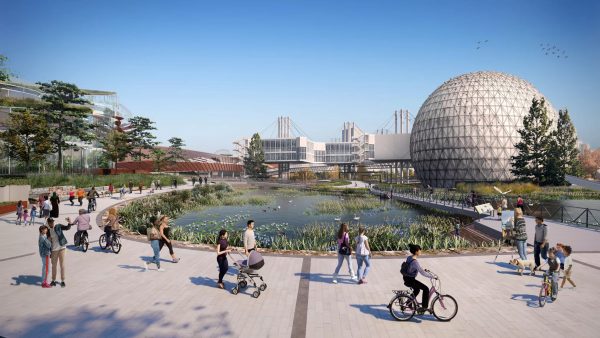

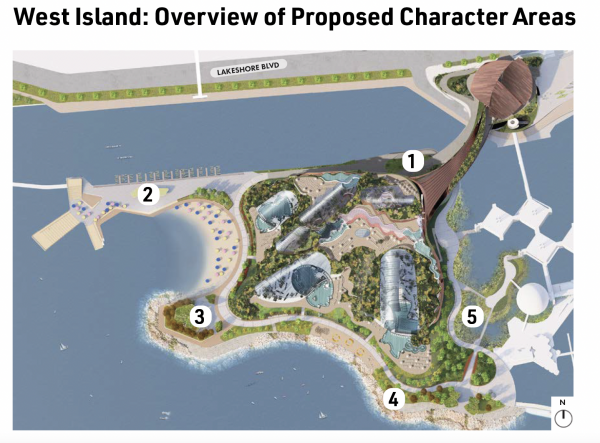
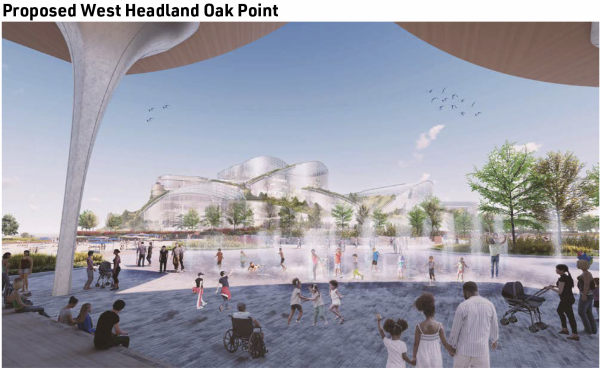
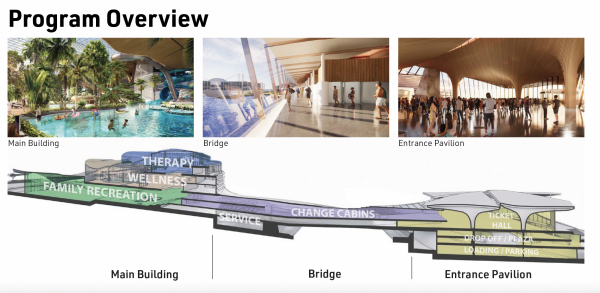
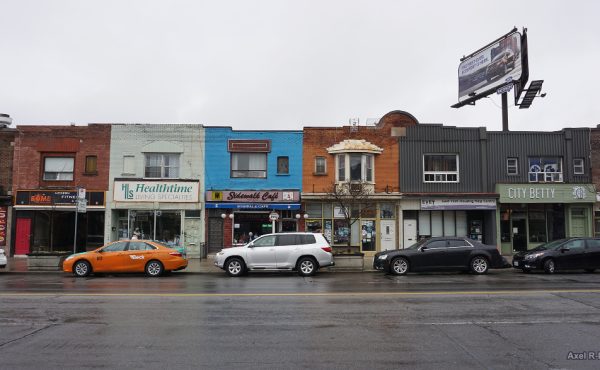


11 comments
There is so much wrong about this development that it strikes me as bizarre that it’s even being discussed as a feasible proposal. My gut says this is a “done deal” that will be forced upon the citizens of Toronto by our overbearing and authoritarian Provincial government. We need to invert the power structure between the City and the Province.
Look to Guildwood park to see how the city hands public land to private companies. Total disaster for non paying visitors.
https://www.thestar.com/news/gta/2022/12/23/fix-the-broken-promises-guild-inn-advocates-say-managment-company-breaking-lease-terms.html
Disaster, thanks to a corrupt Provincial Government.
Just more of the same self-serving BS by this #DougFordGovernment. They don’t give a shit about Toronto or it’s waterfront. It’s al;l about the payola and backroom dealings
David and Goliath . We must persist in keeping the government of Doug Ford off our important water and green space along the Great Lake of Ontario. Leave it alone. In what day of age when we know better, with all the talk of climate change, do we cut down 879 trees for a parking lot for a spa on the water? What are they ,we, thinking? our children will ask? Its absurd. Move the spa to another area. don’t pollute the cleanest spot to swim in the city. May I suggest where The Fords live, Wonderland, Science Centre. Do we know yet, the Government will not do anything for positive change for the protection of our water, health. Its up to us in the community to safe guard the nature we love. Look how busy Trillium park and The West Island of Ontario Place is, already over crowded with Torontonians who need this area for the soul, and physical activity. So what’s the plan People? What do we do against this destructive proposal for the elite ? surely not another forum that’s run by who? if that works for you. Knowledge is power. At the very least not lose hope. Like I sometimes do. David and Goliath, Old story, True today. lets hope for the strength and wisdom of the little guy.With Peace and Love in mind cause that’s the only thing that wins this, or ever does.
What a bully proposal from the provincial government– to take over prime water front recreation space and give it in perpetuity to one company. That should be illegal– the contract should be reviewed and renewed on say a ten year cycle. What about the people who use Ontario Place right now? For concerts, birdwatching, dragon boat festivals and more? This is going to be a transportation bottleneck even without reaching their ridiculous goals of 14,000 paying customers per day. Anyone that has recently gone to a concert at the Budweiser stage knows of the chaos after the show. I think this is going to be a gaudy money-pit, maybe like the SkyDome, which will end up costing the citizens of Ontario much more to built and keep warm than the asset is actually worth.
This project could be built anywhere in the world. To build it on our beautiful and majestic Ontario Place is outrageous. It’s a wholesale giveaway of our beloved jewel, forever. Add to that environmental damage of our best spot in the city!!! We deserve better.
This explains why Ford wanted the downtown relief line (now “Ontario Line”) to reach all the way to CNE/Ontario Place. Connecting the dots.
Ford seems determined to put a theme park on the lakefront.
The spa will fail after a couple of years, Therme will pull out, selling whatever they can to the provincial government (think 407-level bad deals) and then Ford and Co. will do whatever they want with the land. That massive underground parking lot would probably be a good base for condos.
As of Nov 2022, Ford has stopped 3rd party appeals to COA team that is made up of one hipster, one gramma who just says,… that’s pretty and one experienced wise man a fair assessor named Ron, who looks to be voted out by these 2 idiots. Ford is a monster who is creating this monster with bad taste… I wish he would travel and see good ideas elsewhere.
Ontario Place for some reason, got ‘tired’ .. maybe true .. was lovely in 1980’s and for many years thereafter .. attendance dwindled for a host of reasons .. the horses have left the barn, but open space with some eating/drinking establishments have been enough for May to October .. but then what .. shut it down from late October to mid May? Some year round use seems prudent .. however the current scheme seems excessive .. don’t forget this land did not exist prior to the mid 1970’s .. it is a ‘new found’ opportunity .. a shame the city and province cannot callaborate more ..